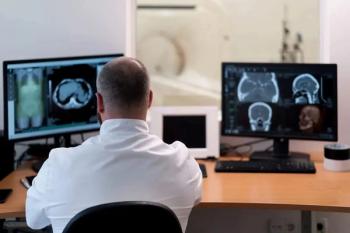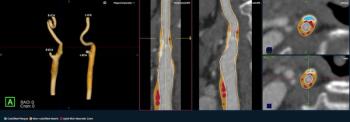
ISIS prepares to market digital nuclear camera
Independent Scintillation Imaging Systems (ISIS) of Lachine, Quebec,will build a direct sales and marketing group headquartered outsideBoston to handle U.S. sales of its non-Anger, digital nuclearmedicine camera upon approval by the Food and Drug
Independent Scintillation Imaging Systems (ISIS) of Lachine, Quebec,will build a direct sales and marketing group headquartered outsideBoston to handle U.S. sales of its non-Anger, digital nuclearmedicine camera upon approval by the Food and Drug Administration,according to Terrence A. Mailloux, chairman and CEO.
ISIS is preparing an FDA application for the innovative nuclearmedicine camera, which was discussed at the 1991 Society of NuclearMedicine meeting (SCAN 7/3/91) and displayed at the SNM exhibitionin Los Angeles in June. The system shown in L.A. is intended forinstallation at the firm's first clinical site at Notre Dame Hospitalin Montreal, Mailloux said.
Mailloux has teamed with ISIS president and camera inventorIain Stark in building the new company. Stark previously servedas president of the North American subsidiary of Scottish gammacamera manufacturer Scintronix (SCAN 12/28/88).
"Iain and I found each other," Mailloux told SCAN."We are based in Quebec and work with the (provincial) government.That requires us to speak in French, which I can do. They alsolike to see a combination of science and management."
ISIS received research grant money and loans from the Quebecgovernment, which enabled the company to start and rapidly proceedwith its camera development program. The firm is also supportedwith venture capital funds, he said.
Mailloux was formerly executive vice president and generalmanager of health-care operations for Hoechst Canada, with additionalresponsibility for parts of South America and the West Indies.The large German concern was just beginning to build its internationalbusiness when Mailloux joined, he noted.
"Hoechst was essentially a start-up in Canada when I joinedthem," Mailloux said. "After leaving there a few yearsago, I worked at first for a start-up pharmaceutical company onthe west coast of Canada. I enjoy working with small start-upcompanies that you can grow and do something with."
ISIS will pursue a mixed direct sales and distribution strategyworldwide. The company plans direct sales in Canada as well asin the U.S. market. Vartec, an associate company in the U.K.,will eventually operate under the ISIS name and handle sales inthat country, he said.
THE ISIS CAMERA CONVERTS analog signals to digital form withinthe individual photomultiplier tubes, Stark told SCAN. Initiallyconfigured with a single detector, the system will also offerdual- and triple-head SPECT imaging.
"This is a true digital process," he said. "Whenyou have an analog to digital converter on each photomultipliertube, you can do many things that cannot be done with a conventionalAnger arithmetic camera."
All other general-purpose gamma cameras on the market positionthe nuclear event using the Anger principle and then digitizethe information. The ISIS system digitizes first and determineswhere the event is from the digital data, he said.
"This results in better positional and energy resolution,"Stark said.
Errors are corrected at the time the positional calculationsare made. This includes correcting linearity, energy, PM tubenonuniformity, crystal nonuniformity and magnetic effect.
Nuclear physicians are enthusiastic about the energy independenceof this gamma camera, Stark said.
"If you tune an Anger camera on iodine-131 and leave ittuned on iodine-131 and then put a technetium flood in front ofit, the uniformity is completely broken up. We can use any (energy)at the same time. That means you can use the new family of scattermeasurements and correction algorithms that are out there."
Work that has been done on these new algorithms is valid, butthe Anger cameras used have produced invalid results, he said.Images observed down the energy range from the peak are nonuniformand the data are, therefore, incorrect.
The energy independence of the ISIS camera will allow investigatorsto characterize and measure the scatter content within the nuclearimage, Stark said.
"If you know what that (scatter content) is and find outthe attenuation data, which is related, you can theoreticallyget absolute quantification with single-photon work. That is aHoly Grail that (nuclear medicine physicians) are looking for,"he said.
Newsletter
Stay at the forefront of radiology with the Diagnostic Imaging newsletter, delivering the latest news, clinical insights, and imaging advancements for today’s radiologists.






























